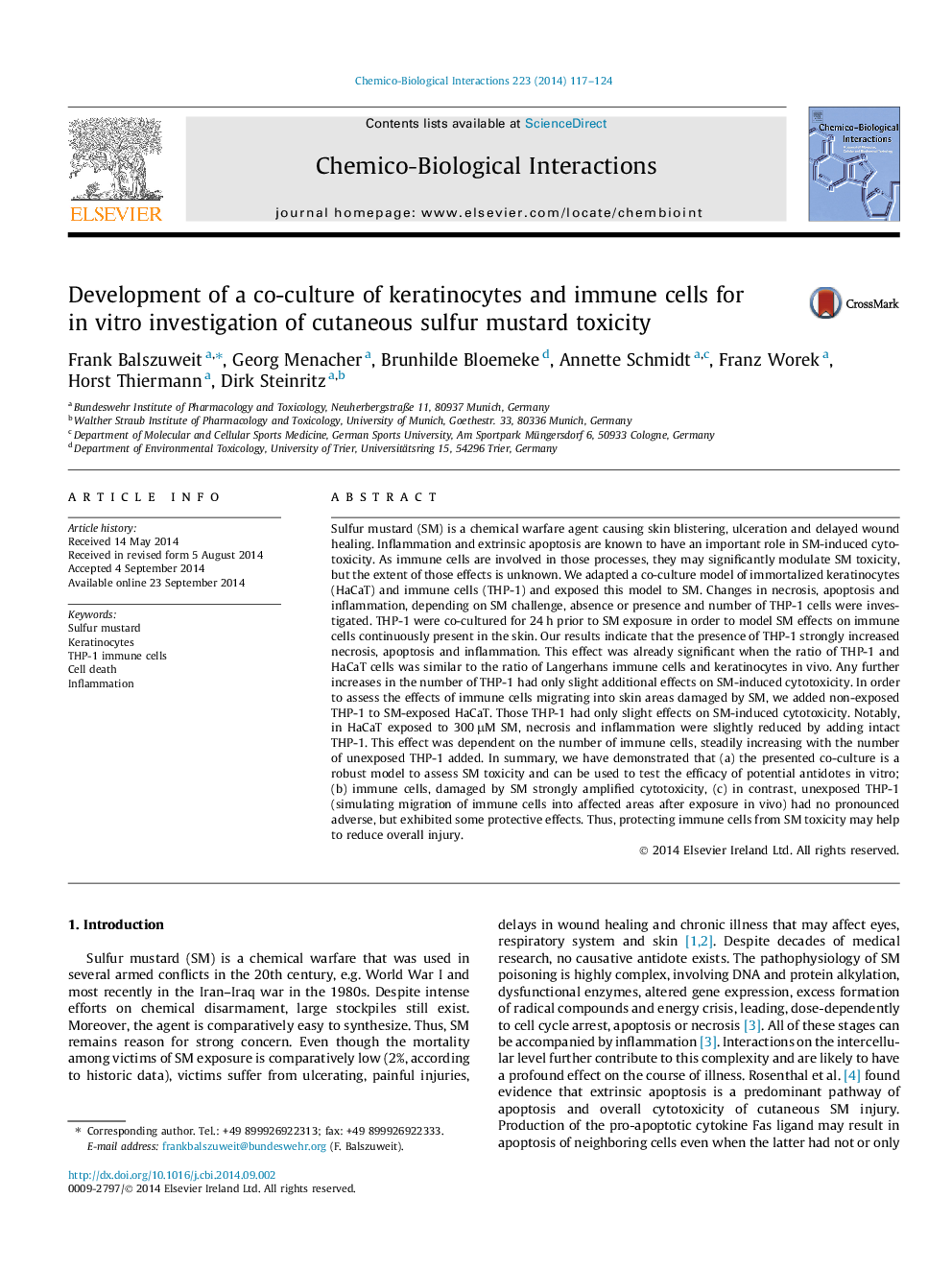| Article ID | Journal | Published Year | Pages | File Type |
|---|---|---|---|---|
| 2580317 | Chemico-Biological Interactions | 2014 | 8 Pages |
•This is the first immune-competent co-culture model to investigate cutaneous sulfur mustard toxicity.•Immune cells, damaged by SM, strongly amplify toxic effects, whereas unexposed immune cells contribute to mitigation.•Low concentrations of immune cells, similar to in vivo conditions, are sufficient for differential effects.•The model can be used for high-throughput assessment of therapeutics against SM toxicity.
Sulfur mustard (SM) is a chemical warfare agent causing skin blistering, ulceration and delayed wound healing. Inflammation and extrinsic apoptosis are known to have an important role in SM-induced cytotoxicity. As immune cells are involved in those processes, they may significantly modulate SM toxicity, but the extent of those effects is unknown. We adapted a co-culture model of immortalized keratinocytes (HaCaT) and immune cells (THP-1) and exposed this model to SM. Changes in necrosis, apoptosis and inflammation, depending on SM challenge, absence or presence and number of THP-1 cells were investigated. THP-1 were co-cultured for 24 h prior to SM exposure in order to model SM effects on immune cells continuously present in the skin. Our results indicate that the presence of THP-1 strongly increased necrosis, apoptosis and inflammation. This effect was already significant when the ratio of THP-1 and HaCaT cells was similar to the ratio of Langerhans immune cells and keratinocytes in vivo. Any further increases in the number of THP-1 had only slight additional effects on SM-induced cytotoxicity. In order to assess the effects of immune cells migrating into skin areas damaged by SM, we added non-exposed THP-1 to SM-exposed HaCaT. Those THP-1 had only slight effects on SM-induced cytotoxicity. Notably, in HaCaT exposed to 300 μM SM, necrosis and inflammation were slightly reduced by adding intact THP-1. This effect was dependent on the number of immune cells, steadily increasing with the number of unexposed THP-1 added. In summary, we have demonstrated that (a) the presented co-culture is a robust model to assess SM toxicity and can be used to test the efficacy of potential antidotes in vitro; (b) immune cells, damaged by SM strongly amplified cytotoxicity, (c) in contrast, unexposed THP-1 (simulating migration of immune cells into affected areas after exposure in vivo) had no pronounced adverse, but exhibited some protective effects. Thus, protecting immune cells from SM toxicity may help to reduce overall injury.
